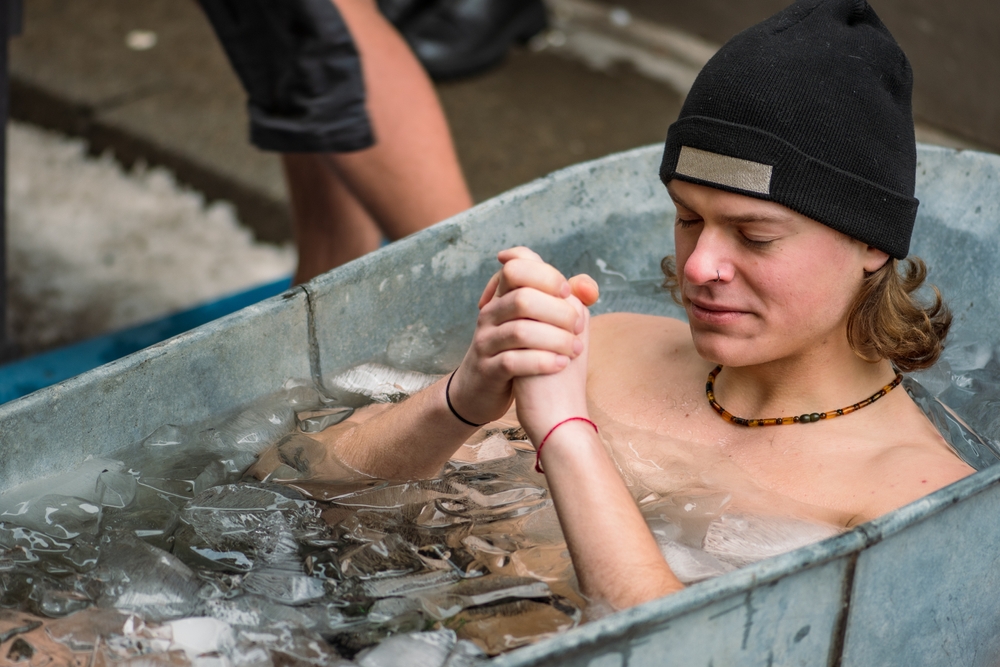Ice Tub: Benefits, Safety, and Practical Use
Ice tubs are containers designed for purposeful exposure to very cold water for short periods. People use ice tubs for recovery after intense exercise, to explore cold adaptation, or as part of wellness routines that include contrast therapy. The practice of cold water or ice tub immersion typically involves reduced-temperature water (often just above freezing) and carefully timed sessions. This article outlines what ice tubs are, how cold water affects the body, practical water immersion approaches, safety and health considerations, and how ice tubs can fit into broader wellness plans. This article is for informational purposes only and should not be considered medical advice. Please consult a qualified healthcare professional for personalized guidance and treatment.

What is an ice tub and how is it used
An ice tub is any tub or insulated container filled with cold water and ice to create a controlled cold-water immersion environment. In sport and clinical settings, tubs range from simple plastic barrels to purpose-built portable units with temperature control. Typical use involves sitting up to the chest in cold water for short durations, interspersed with warm recovery as desired. Ice tubs are also used for targeted therapy—covering specific limbs—or whole-body sessions. Practical setup includes a safe location, a thermometer, a chair or non-slip surface, and an observer if sessions are longer or if the user is inexperienced.
What effects does cold water have on the body
Cold water immersion triggers rapid physiological responses: vasoconstriction (narrowing of blood vessels), a sudden shift in circulation, and activation of the sympathetic nervous system. These immediate changes can alter perception of pain and temporarily reduce localized swelling after injury. Cold exposure also stimulates breathing and can increase alertness. Some studies and reports describe improved recovery markers after intense exercise, though responses vary by individual and by how cold and how long the immersion lasts. The effects are time-dependent: short exposures differ significantly from prolonged cold stress.
How to practice safe water immersion
Safe practice focuses on duration, temperature, and monitoring. Beginners commonly start with water temperatures around 10–15°C (50–59°F) and sessions of one to three minutes, gradually adjusting as tolerance builds. Maintain shallow immersion if concerned about cardiovascular strain, and exit if you feel numbness, dizziness, or severe discomfort. Always have a plan for gradual rewarming and avoid alcohol before or immediately after sessions. Individuals with cardiovascular disease, uncontrolled hypertension, or certain respiratory conditions should consult a clinician before attempting ice tub use.
What health considerations apply to ice tub use
Health considerations include pre-existing medical conditions and individual tolerance. Cold exposure increases cardiac workload temporarily and can provoke arrhythmias in susceptible people. People with Raynaud’s phenomenon, cold urticaria, or neuropathy should be cautious or avoid immersion. For athletes, ice tubs may reduce short-term soreness and perceived fatigue, but the impact on long-term training adaptations is mixed—some research suggests repeated cold application could blunt certain training-induced gains. Balance immediate recovery needs with longer-term training goals and professional medical advice.
How ice tubs relate to wellness and routine integration
Incorporating an ice tub into a wellness routine can be done thoughtfully: pair short cold immersions with breathing exercises, contrast baths, or active recovery. Some use cold water immersion as a mental training tool to build tolerance to stressors, while others include it periodically after particularly intense physical efforts. Consider frequency—daily full-body ice baths are not necessary for most people—and always prioritize sleep, nutrition, and progressive training load management as primary wellness pillars. Local services, such as athletic recovery centers or wellness clinics, may offer guided sessions if you want supervised experiences.
Conclusion
Ice tubs and cold-water immersion are tools that can provide short-term recovery effects, influence physiological responses, and be part of broader wellness practices when used carefully. Benefits and risks depend on temperature, duration, individual health status, and the goals behind the immersion. Use conservative timing, monitor responses closely, and consult healthcare professionals for personalized advice before beginning a cold-water routine.






